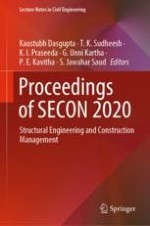2021 | OriginalPaper | Chapter
An Experimental and Analytical Investigation on the Characteristics of Light Weight Concrete Using Waste Burnt Ash and Pumice Stones
Authors : PL. Meyyappan, M. Pallikonda Rajasekaran, R. Sathya Soroopan
Published in: Proceedings of SECON 2020
Publisher: Springer International Publishing
Activate our intelligent search to find suitable subject content or patents.
Select sections of text to find matching patents with Artificial Intelligence. powered by
Select sections of text to find additional relevant content using AI-assisted search. powered by
